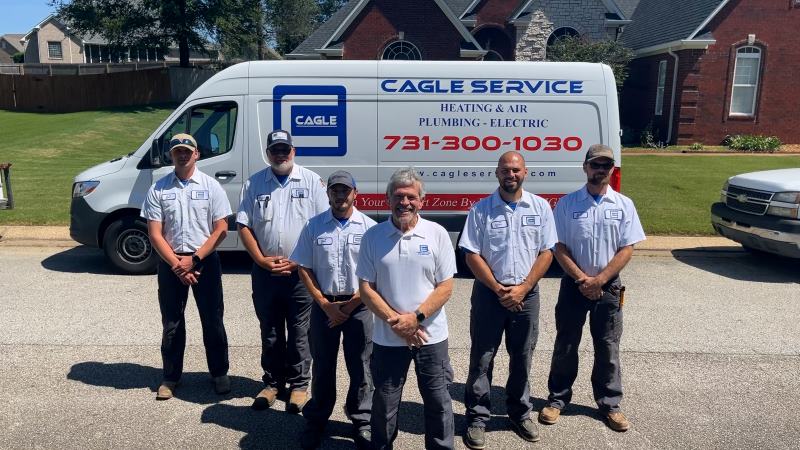When it comes to replacing your furnace or installing a new furnace at a newly constructed location, it’s important to know what size furnace that you need for your particular situation. You don’t want to install a furnace that is too big or too small for the area that is being heated. This can cause issues with the furnace itself, which can lead to premature furnace repairs. The utility bill can also be affected if the furnace isn’t the correct size. So having a properly sized furnace is essential for efficient operation and the lowest utility bills.
But, how do you determine what size furnace that you need?
The Size of a Furnace is Categorized by BTU’s
Determining what size air conditioner that you need is similar to determining what size furnace that you need. In the same way that “tons” are used to categorize the size of an air conditioner, BTU’s (British Thermal Units) are what are used to determine the size of a furnace. Normally you will find BTU’s anywhere from 40,000 to 100,000+. But, when shopping be sure to pay attention to whether the BTU’s that a particular furnace produces is “input” or “output”. If a furnace produces an 80,000 BTU output then normally the input BTU capacity produced is going to be higher than 80,000 due to the heat loss during the heat delivery process. And if a furnace produces an input capacity of 80,000 BTU’s, then the output capacity will normally be under 80,000 BTU’s. Most BTU numbers that you see will be input numbers.
Let me explain more: During the heat delivery process (from the furnace to the inside of your home or business) a percentage of the heat that is produced is lost. This is what the term “AFUE” refers to, which stands for Annual Fuel Utilization Efficiency. This basically determines the unit’s efficiency. For example, if a furnace has an AFUE of 90%, then 10% of the heat that is being produced will be lost during the heat delivery process to your home or business.
Ok, so now that you understand BTU’s, what’s next?
Determining the Furnace Size Needed
The starting point for determining what size furnace that you need is going to be the square footage of the area being heated. But, don’t let that be your only factor. It is important to check the insulation of the home or business or to have it checked by a professional. If the insulation is old or thin this can affect the amount of BTU’s that will be needed. Also, if the window and door seals are old or aren’t sealing as they are supposed to, this can also affect the amount of BTU’s that will be needed.
Why? If heat is being lost to the outside air, then the square footage alone isn’t enough to determine the proper size of the furnace needed. It is advised to have a HVAC Contractor (preferably whoever you will have deliver and install the furnace) inspect the home or business for proper insulation.
Don’t worry! I’m still going to share some numbers with you. I’m going to share some estimated furnace sizes for certain square footage ranges…both properly insulated and improperly insulated.
So, let’s get into them!

What You’ve Been Waiting For
Now, the climate that you live in is going to also affect the preferred BTU capacity. The warmer states of the U.S. won’t require the same amount of BTU’s as the extreme colder states. So, the numbers below are an estimated range starting with the warmer states BTU recommendation and the larger number being the extreme colder states BTU recommendation. States that fall in between these states would be somewhere in between these recommendations. See this detailed chart for more details.
Properly insulated/improperly insulated
1000 Sq Ft – 30,000/35,000 (Texas) – 50,000/60,000 (North Dakota) BTU’s
1500 Sq Ft – 45,000/52,500 (Texas) – 75,000/90,000 (North Dakota) BTU’s
2000 Sq Ft – 60,000/70,000 (Texas) – 100,000/120,000 (North Dakota) BTU’s
2500 Sq Ft – 75,000/87,500 (Texas) – 125,000/150,000 (North Dakota) BTU’s
3000 Sq Ft – 90,000/105,000 (Texas) – 150,000/180,000 (North Dakota) BTU’s
3500 Sq Ft – 105,000/122,500 (Texas) – 175,000/210,000 (North Dakota) BTU’s
4000 Sq Ft – 120,000/140,000 (Texas) – 200,000/240,000 (North Dakota) BTU’s
See the detailed chart at the link above for more numbers concerning square footage areas of over 4000 Sq Ft.
One More Thing
The BTU numbers listed above are output numbers. They are the recommended BTU output capacity needed to heat the corresponding area. So remember, the BTU numbers that are displayed with a corresponding furnace are normally going to be the input numbers. So how do you determine the BTU output capacity?
Simply multiply the listed BTU input numbers of the furnace by the AFUE of the furnace. For example: A furnace with a BTU input capacity of 100,000 BTU’s and with an AFUE of 90% would equal an output capacity of 90,000 BTU’s (100,000 x .90 = 90,000).
NOTE: It is recommended to have a certified HVAC Contractor come out and give you a recommendation and possibly an estimate when you are in the process of determining what furnace size is needed for your home or business. For example, larger homes and businesses might be better suited with a 2 furnace setup compared to a 1 furnace setup. The HVAC Contractor will be able to take into account all of the variables and factors and give you an accurate recommendation and estimate. Normally, this is free of charge.
I Hope this Helped You!
I really hope this post helped you gain some insight on what size furnace your home or business will need. As you can see, there are some different factors that play into the final decision, but this information should help give you a better grasp on the topic.
If you are in Jackson TN or the surrounding areas and would like a free recommendation and estimate, feel free to give us a call at 731-300-1030. You can also comment or ask a question below and we will get back to you!



